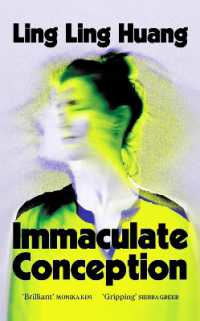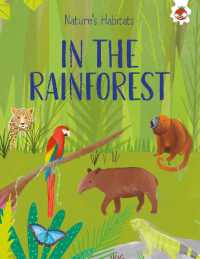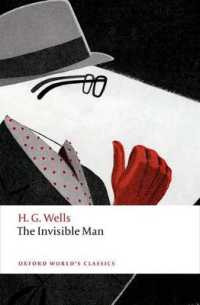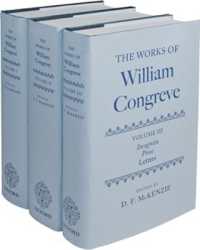- ホーム
- > 洋書
- > 英文書
- > History / World
Full Description
Living with the Dead presents a detailed analysis of ancestor worship in Egypt, using a diverse range of material, both archaeological and anthropological, to examine the relationship between the living and the dead. Iconography and terminology associated with the deceased reveal indistinct differences between the blessedness and malevolence and that the potent spirit of the dead required constant propitiation in the form of worship and offerings. A range of evidence is presented for mortuary cults that were in operation throughout Egyptian history and for the various places, such as the house, shrines, chapels and tomb doorways, where the living could interact with the dead. The private statue cult, where images of individuals were venerated as intermediaries between people and the Gods is also discussed. Collective gatherings and ritual feasting accompanied the burial rites with separate, mortuary banquets serving to maintain ongoing ritual practices focusing on the deceased. Something of a contradiction in attitudes is expressed in the evidence for tomb robbery, the reuse of tombs and funerary equipment and the ways in which communities dealt with the death and burial of children and others on the fringe of society.
Contents
Chapter 1: the nature of the deceased
Characteristics of and terminology relating to the dead
Constituent elements of the dead
Iconography: distinguishing the dead from the living
The malevolent dead
Conclusion
Chapter 2: the cult of the ancestors
Mortuary cult and society
Evidence for mortuary cult
Conclusions
Chapter 3: places of interaction with the dead
Houses
Tombs/Tomb chapels
Shrines and chapels
Temples
Conclusions
Chapter 4: times of interaction between the living and the dead: funerals, festivals, and banquets
Funerals
Festivals and Banquets
Conclusions
Chapter 5: attitudes to the dead
Commemoration of ancestors and the maintenance of cults: ideals and realities
Tomb robbery, the desecration of human remains, damnatio memoriae, and fear of the deceased: conflict between the living and the dead
Placing the dead within the landscape
Reuse of tombs, cemeteries and funerary equipment: prioritising the living over the dead?
Tomb graffiti: form and function
The death and burial of children: an example of attitudes to those on the fringes of society
Conclusions
Chapter 6 Conclusions: living with the dead in Ancient Egypt








